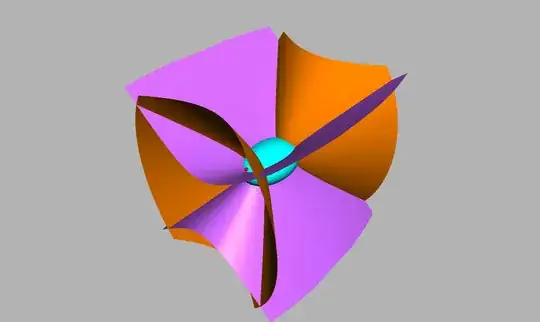I have an ellipsoid given by $S = \{ (x,y,z): \frac{x^{2}}{a^{2}} + \frac{y^{2}}{b^{2}} + \frac{z^{2}}{c^{2}} = 1$, for some fixed $a,b,c \in \mathbb{R}^{+} \}$. I need to find the umbilic points of this ellipsoid. However, everytime I try a parametrization $X$, the expressions for the first and second fundamental forms quickly become rather messy and the Gaussian curvature $K$ and the mean curvature $H$ are nigh impossible to work with by hand. I ask for help in finding a parametrization $X$ that the quantities therefrom derived are nice and tidy enough to work with by the time that I get to calculating the umbilic points. Also, if you have any tricks in which way to determine the umbilic points might be easiest in this case (which method to choose), that would be very helpful too.
I have tried $X_{1}(u,v) = (a \cos{u} \sin{v}, b \sin{u} \sin{v}, c \cos{v})$ and $X_{2}(u,v) = (u, v, \pm c \sqrt{1 - \frac{u^{2}}{a^{2}} - \frac{v^{2}}{b^{2}}})$ to no avail, along with a few others that I swiftly gave up on.
